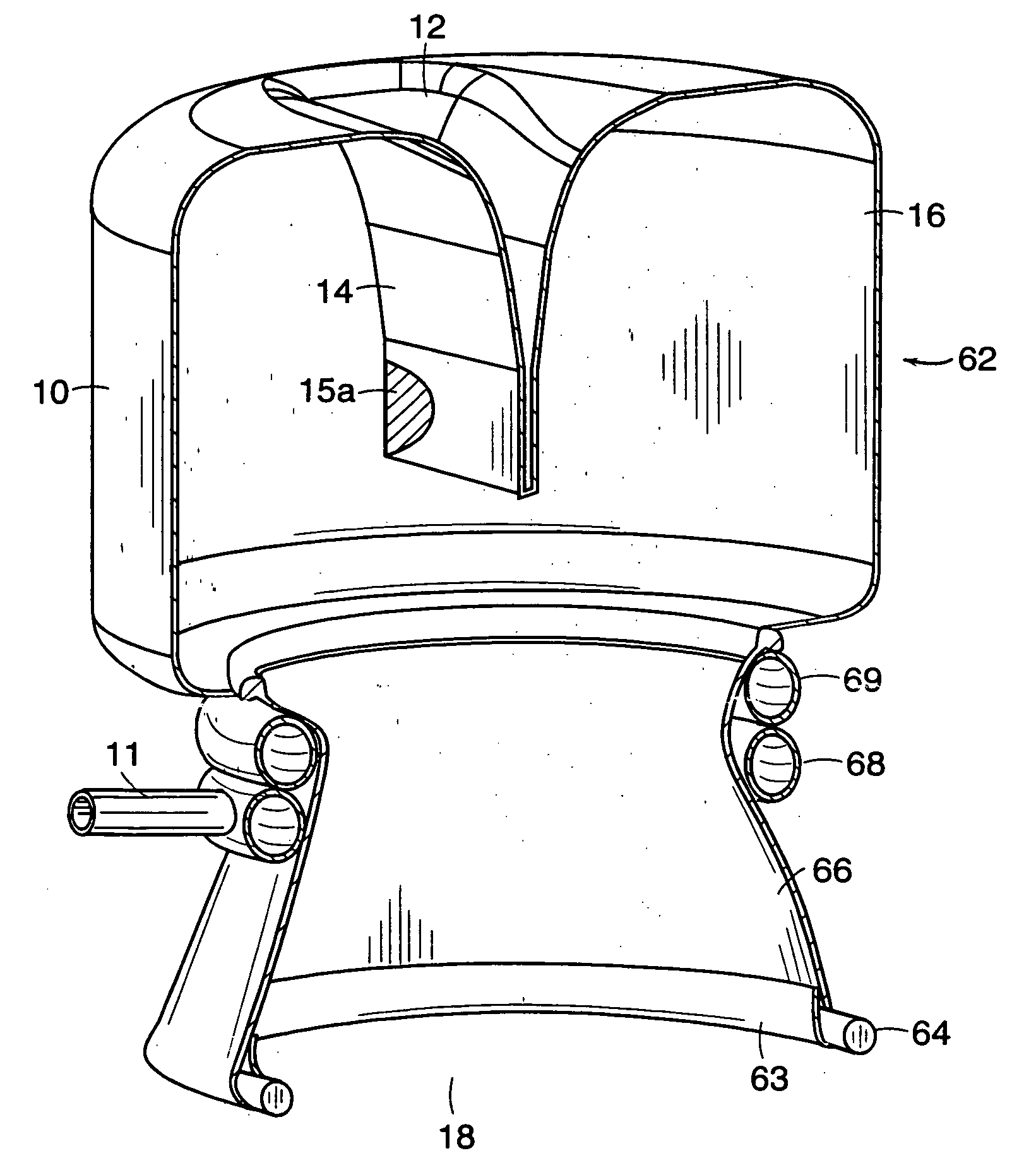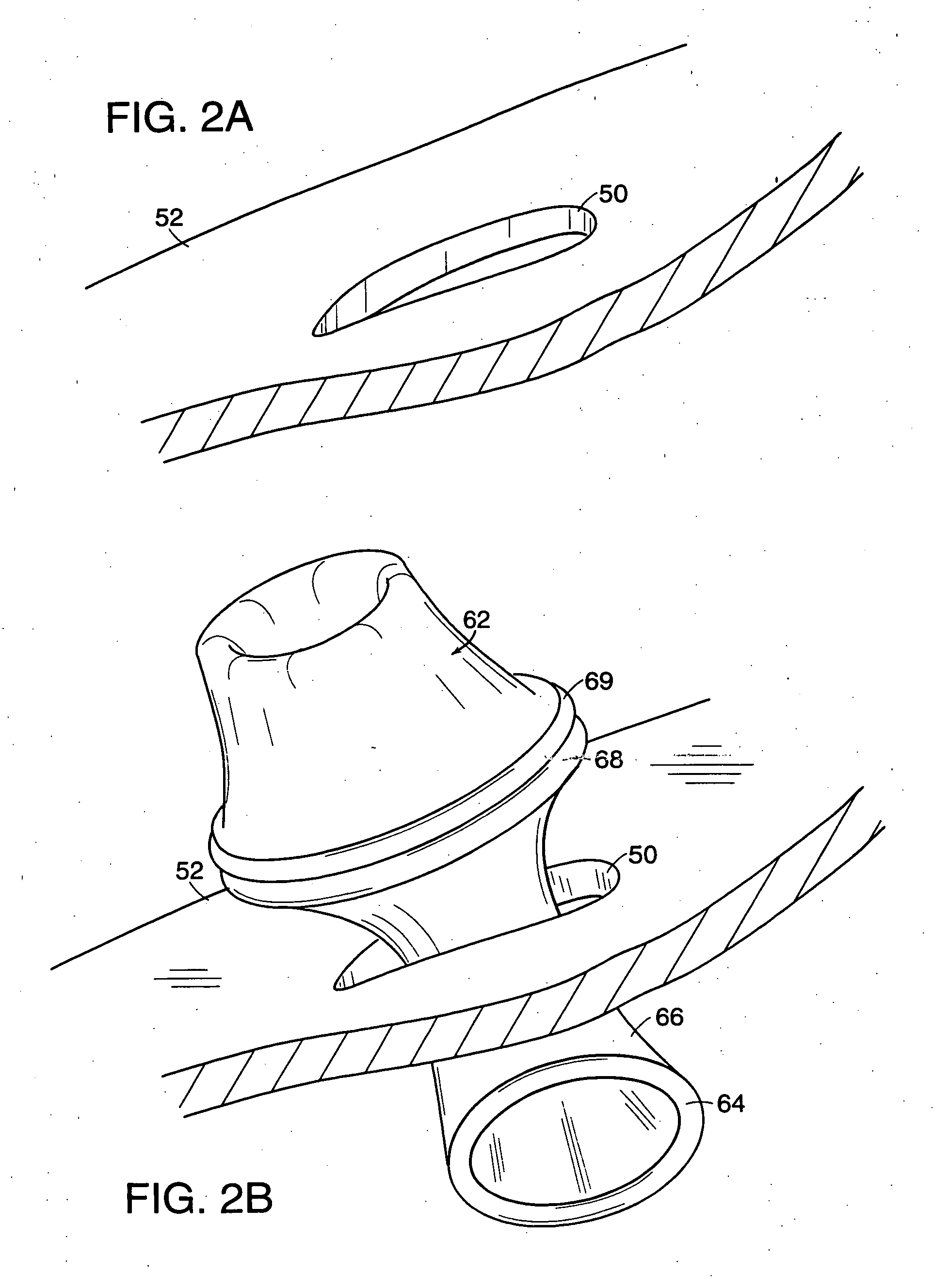Surgical access port
a surgical and access port technology, applied in the field of surgical devices, can solve the problems of unsightly scars, increased trauma, and extended recovery tim
- Summary
- Abstract
- Description
- Claims
- Application Information
AI Technical Summary
Benefits of technology
Problems solved by technology
Method used
Image
Examples
Embodiment Construction
[0039] The surgical access port is best described as having two parts, a wound retractor and a sealing sleeve.
[0040] The wound retractor includes a flexible tubular skirt having a first end reinforced with a stiff ring so that the first end is maintained in an open orientation, and a second end surrounded by one or more inflatable collars. The reinforced first end is inserted into the body cavity through an incision, providing a channel through the skirt from the outside to the inside of the body cavity. During use, the collars are inflated, thereby drawing out skirt within the incision and pulling the reinforced first end of the skirt tight against the inner wall of the patient's skin. As a result, the edges of the incision are retracted into an opening and the skirt seals around the perimeter of the opening along the inner abdominal wall to the outer surface of the skin.
[0041] A sealing sleeve is attached to the wound retractor portion above the inflatable collars. The sealing s...
PUM
 Login to View More
Login to View More Abstract
Description
Claims
Application Information
 Login to View More
Login to View More - R&D
- Intellectual Property
- Life Sciences
- Materials
- Tech Scout
- Unparalleled Data Quality
- Higher Quality Content
- 60% Fewer Hallucinations
Browse by: Latest US Patents, China's latest patents, Technical Efficacy Thesaurus, Application Domain, Technology Topic, Popular Technical Reports.
© 2025 PatSnap. All rights reserved.Legal|Privacy policy|Modern Slavery Act Transparency Statement|Sitemap|About US| Contact US: help@patsnap.com



